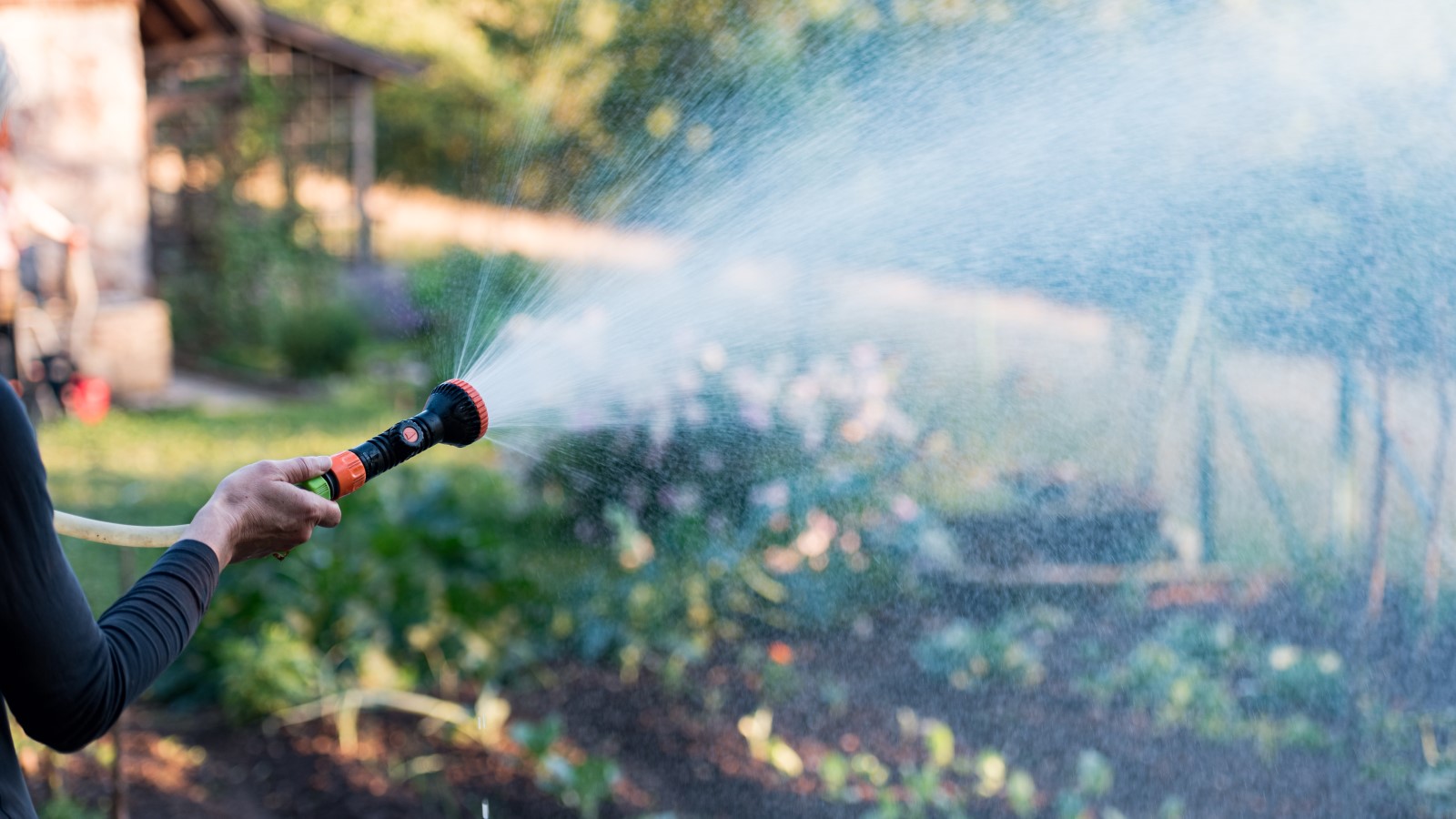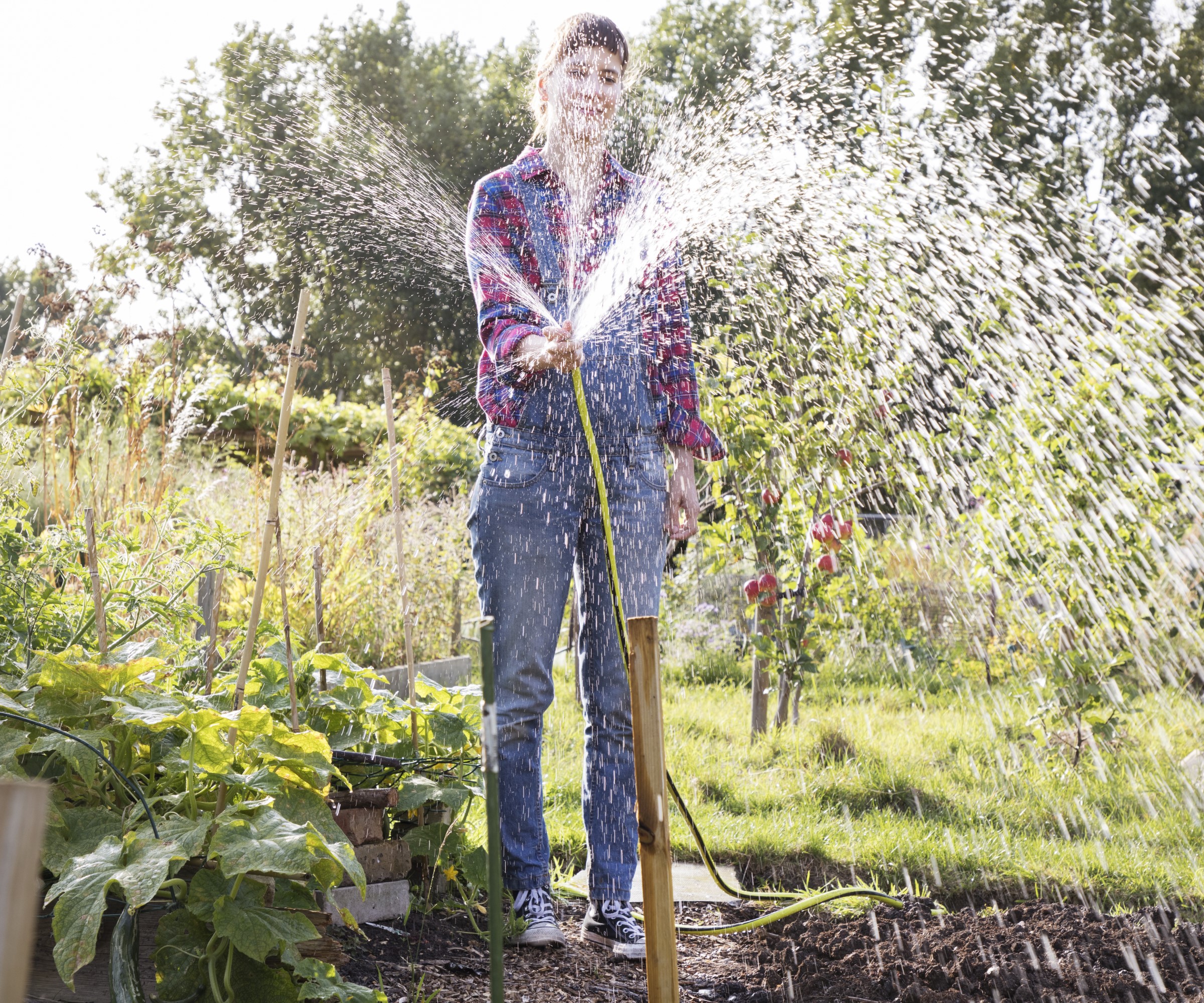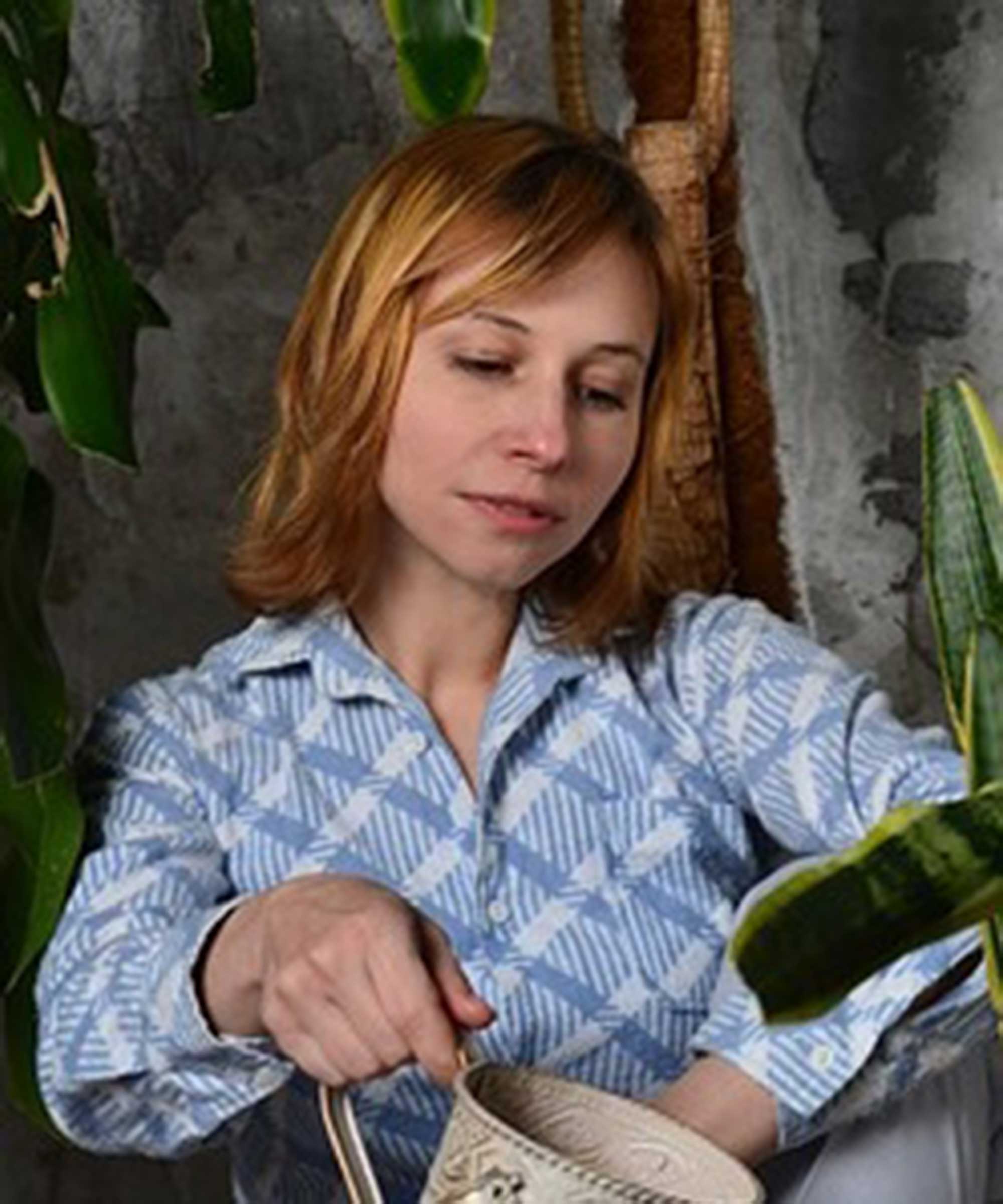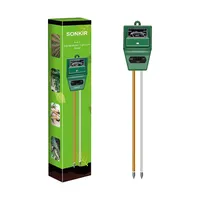Overwatering outdoor plants – 6 common signs you're giving them too much water
Discover the tell-tale signs to look out for to prevent your plants suffering from too much moisture


Overwatering is a common issue that all gardeners new and old are likely guilty of at some point. More is not always better when it comes to watering and overwatering has the potential to kill plants.
The damage does not happen overnight and your plants will show you when they are unhappy. You should be able to spot the signs that you are overwatering outdoor plants. They will display symptoms such as yellow leaves, wilting, or a lack of new growth, while even the color of the surrounding soil can be an indicator of issues.
When judging when to water plants, always remember to check the current moisture of the soil. It may suffice already and adding more unnecessarily could risk the health of your plants.

Keep a close eye on plants for signs of watering-related issues
How do you know if you are overwatering your plants?
Overwatering is a common garden watering mistake and the result is that roots cannot absorb oxygen in saturated soil and that can cause the entire plant to decay. While you cannot see root rot below the surface, the presence of certain signs above ground can be indicators of this potentially devastating issue.
Zahid Adnan, an experienced gardener and founder of The Plant Bible, says it is ‘important to understand and recognize the signs of overwatering in outdoor plants’ to be able to step in and help maintain the vitality of plants.
He adds: ‘Identifying the signs of overwatering in outdoor plants is crucial for maintaining their health and preventing potential damage. By closely monitoring your plants, you can take timely action to rectify overwatering issues.’
We take a closer look at six signs of overwatering, so you know what to look out for if your plants show the symptoms of too much watering.
Design expertise in your inbox – from inspiring decorating ideas and beautiful celebrity homes to practical gardening advice and shopping round-ups.

Zahid is a renowned figure in the gardening industry, with extensive experience and hard-earned skills in horticulture. As the Founder and Editor of ThePlantBible.com, he provides top-tier content and professional advice to fellow gardening enthusiasts on a daily basis. In addition to his work, Zahid manages a 10-hectare agricultural land and maintains an exceptional garden in his own backyard.

Wilting leaves can be a sign of overwatering outdoor plants
1. Wilting
It may seem counterintuitive, but wilting can be one of the first signs of overwatering. This could be confusing to some gardeners as wilting plants are more commonly thought of as a sign of underwatering. This has the potential for people adding more water to wilting plants that are already overwatered, especially when watering plants in hot weather. Wilting can occur as too much water will restrict the availability of oxygen to the roots, essentially suffocating them so they cannot take in water. The plant will turn limp and wilt as a result.
At the first sign of wilting, check the moisture levels in the soil an inch or so deep by sticking your fingers into the ground, or using a moisture meter. If it feels very damp and like there is lots of moisture there, then step away and allow the soil to dry out before watering again. This should allow the roots to recover and then, going forward, always allow the soil to dry out between waterings.
Checking levels under the surface is essential, whether it is plants in the ground or watering plants in containers. In pots you can water plants from the bottom to help control how much water is taken up by the soil.

A lack of oxygen due to waterlogged soil causes leaves to wilt
SONKIR Soil pH Meter | available at Amazon
A 3-in-1 soil moisture meter that can detect soil moisture, the pH of the soil, and measure sunlight levels. Insert the probe 6-7 inches into the soil to find out the precise moisture levels and whether you need to water or not
2. Yellowing leaves
Yellowing leaves can be a warning sign for a plethora of problems, including lack of nutrients, pests, diseases, and overwatering. The leaves will start to lose their green color and slowly turn yellow, while browning can occur starting at the tips. The lowest leaves may start to drop as well as the suffocating roots cannot deliver the water and nutrients that the plant needs to thrive.
Yellow leaves can affect any plant, from roses with yellow leaves to tomatoes suffering with yellow leaves. The best tactic is to again check the moisture levels in the soil where the eyes cannot see. If it feels overly moist then overwatering might indeed be the cause. Then you repeat the suggestion above and wait until the soil dries out. If the soil doesn’t feel overly wet, then the yellow leaves could be the warning sign for something else.

Overwatering can suffocate roots which causes yellowing of leaves
3. Stunted growth
Stunted growth basically means that the plant is not growing as you would expect, it is remaining small and underdeveloped with a lack of any new growth. Stunted growth is often seen along with yellowing leaves as classic signs of overwatering.
Diana Cox, an experienced home and gardening consultant and the creative force behind The Gardening Talk, explains: ‘Overwatering leads to oxygen deprivation in the roots, which hinders cell division and slows down plant metabolism, resulting in stunted growth. To counteract this, water the plants less frequently and improve soil aeration and drainage.
‘By implementing these techniques, I have observed significant improvements in plant growth after addressing overwatering issues.’

Diana started her website as a way to help others who are new to the world of gardening and plant care. She has been growing plants since she was a little girl, and started to document her experience in gardening a few years ago.

Plants may not grow as vigorously as expected if overwatered
4. Leaf drop
Leaf drop, where the foliage falls from the plant prematurely, is a sign of a stressed plant and both over and underwatering can cause this. However, most times it is not out of the blue, usually there are earlier signs of the leaves turning yellow or brown before they drop. The plant sheds its leaves as a reaction to the stress caused by a weakened root system. Overwatering can cause waterlogged roots that start to rot and leaf drop will occur as a result.
Try to check the soil moisture levels at the first sign of yellow leaves, but definitely do it after any leaf drop occurs. If the soil does not feel excessively wet and overwatering might not be the case, then assess the plants for pests or diseases that could be the cause.

Overwatering can cause leaves to turn yellow and drop from the plant
5. Edema
Edema, also seen referred to as oedema, is an unusual sign that your plant has been overwatered. It shows as bumps, blisters, or lesions on the foliage. The contributing factors are that the plant has absorbed more water than it needs. The cells are filled with water as a result, filling up and swelling until they burst.
Some types of plants are more susceptible than others, such as camellias, fuschias, pelargoniums or succulents and edibles including peppers and tomatoes. It can be more of a problem in US hardiness zones with high humidity.
The best way to combat edema is to check the soil moisture levels and, where possible, add more organic matter like compost or leaf mold, to help improve the drainage of the soil. Do not remove affected leaves as this could increase the problem across the plant.

Edemas are caused by plant cells bursting from too much water
6. Green soil
While the plants themselves show the signs of overwatering, so can the soil around them. If the soil turns shades of green then that is a sign it has been overwatered.
The green soil is a sign of algae or moss growth, which thrives in wet conditions. Though the algae on the soil will not harm established plants, it can affect the growth of young plants and is also unsightly on flower beds and borders.
Regular removal of clumps or algae or moss is recommended, together with reducing the regularity of watering and adding drainage to the bed to prevent the soil being compacted and waterlogged.
FAQs
Can a plant recover from overwatering?
Yes, you can fix an overwatered plant providing the warning signs have been spotted and action has been taken. It will depend on the severity of the overwatering and how long it has occurred over. For example, a wilting plant or one with a few yellow leaves is easily recoverable, however if severe root rot has occurred due to waterlogging it may be too late.
It is crucial to know your plants to adjust the watering frequency and amount to fit the needs of each specific plant. Let the soil dry out thoroughly after a plant has been overwatered, before adding any more moisture. Adding organic materials to help improve the drainage can help stop a bed becoming waterlogged and stop plants sitting in very wet conditions.
Vigilance is obviously key when it comes to looking after your plants. It is not just with watering where you need to look closely for symptoms, it is the same when it comes to pests and diseases. Know your plants, monitor your plants, and do your research. If you learn all about your plants, including how much water they need, it will help you maintain a good watering regime that should help avoid potential problems of overwatering.

Drew has worked as a writer since 2008 and was also a professional gardener for many years. As a trained horticulturist, he worked in prestigious historic gardens, including Hanbury Hall and the world-famous Hidcote Manor Garden. He also spent time as a specialist kitchen gardener at Soho Farmhouse and Netherby Hall, where he grew vegetables, fruit, herbs, and cut flowers for restaurants. Drew has written for numerous print and online publications and is an allotment holder and garden blogger. He is shortlisted for the Digital Gardening Writer of the Year at the 2025 Garden Media Guild Awards.
